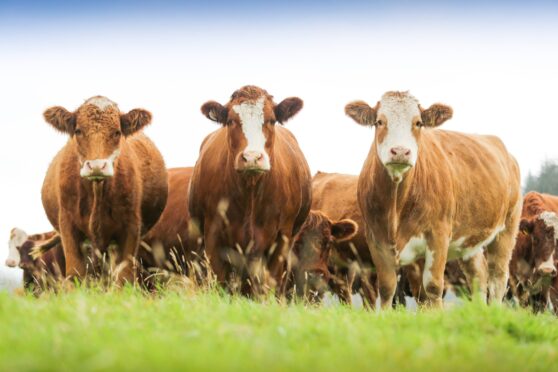Levy payers have been given the chance to hear how Quality Meat Scotland (QMS) plans to deliver its five-year strategy and make the country the choice for premium red meat.
Over a dozen workshops have taken place across the country, with the first levy increase in more than a decade on the cards for QMS to support and develop the industry.
The Aberdeenshire event held at Thainstone Centre attracted one of the largest attendances and saw farmers highlight key issues within the region.
One farmer told QMS chief executive Sarah Millar and chair Kate Rowell that the levy board could throw as much money towards advertising as it liked but argued that the Scottish premium for red meat was almost non existent.
He said: “The only thing that holds the red meat industry back is the cheap food policy. How can we develop our businesses, breeds and strategies if we are held to the last penny?
“We have lost the premium for prime cattle up here and a lot of producers are sending their animals to the likes of Darlington to be sold for a better price. There are no constraints to weight across the border so they are getting more for their carcase.
‘We have lost the premium for prime cattle up here and a lot of producers are sending their animals south’ said one farmer
“The problem here is the gross income per animal.”
NFU Scotland vice-president Andrew Connon also spoke about how the Scotch brand has disappeared in high end London restaurants over the last decade or two.
“Our biggest market and opportunity would be within the M25 and I think it’s fair to say within recent years we have lost that edge and the Scotch brand through restaurants in London,” said Mr Connon.
“We need an advanced focus within one of our biggest markets where we can sell a lot of our benefits.”
Scotch brand lost in high end London restaurants
The QMS representatives did note a list of London restaurants where Scottish produce was supplied to but agreed more could be done to address the key market.
Huntly farmer Gary Christie said: “We are farming in the biggest finishing area of Scotland but we lack processing facilities. If you do put your animals to the mart, they usually end up in England. We have waiting lists of three weeks for lambs and then they land out of spec.”
Mr Connon added: “Being able to attract enough buyers to live marts up here is a major issue which puts the north-east at a huge disadvantage. That’s why a lot of sheep are heading south because there are four times the amount of buyers down there.”
Millar said more had to be done to encourage young people into the industry to continue succession in businesses and avoid a reduction in suckler cow numbers.
QMS chief keen to encourage next generation and reduce reduction in suckler cow numbers
QMS has proposed a new mechanism for setting the levy from spring 2024, adding a small CPI linked rise each year to ensure the financial model remains sustainable.
The mechanism will be reviewed at the end of the five years, to ensure it remains fit for purpose.
An online discussion and review will be held at 12.30pm on January 24 and is open to all members.
To submit a question, please email info@qmscotland.co.uk.
